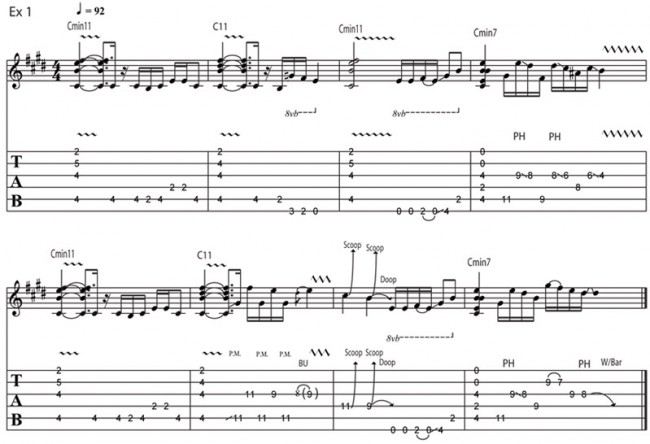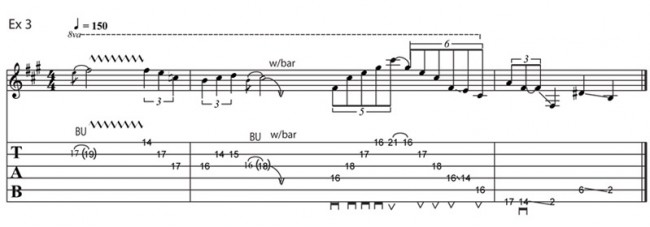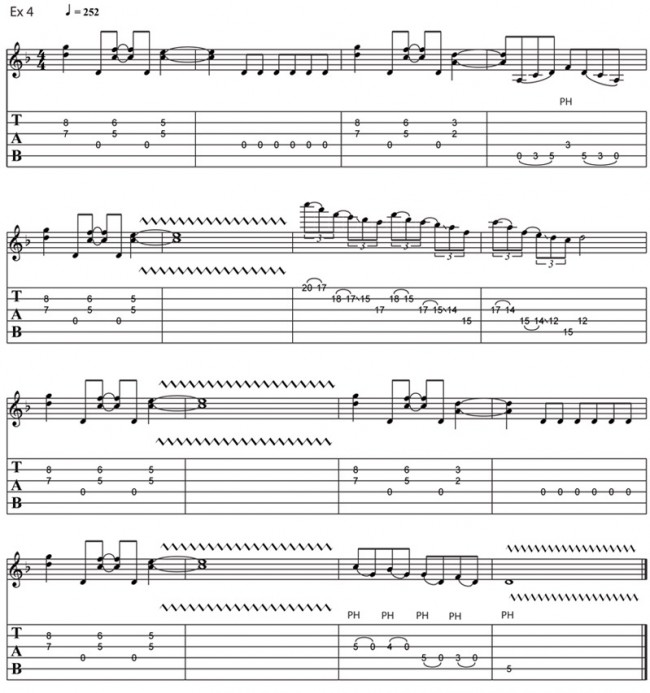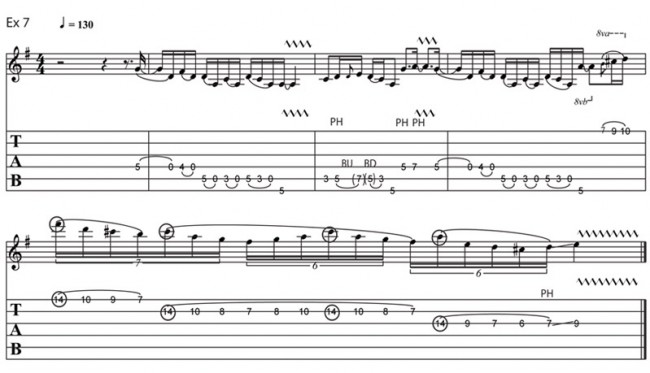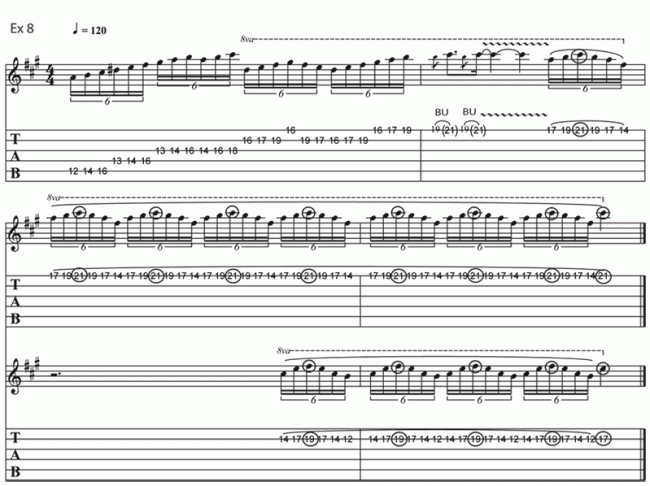
Steve Vai was born on the 6th of June 1960 in New York, USA. He started playing guitar at the age of 13, influenced by Jimi Hendrix, Led Zeppelin and Alice Cooper. Before long, Vai met up with an older player from his high school, the now world famous Joe Satriani with whom he took lessons from throughout his early teens. After high school, aged 18, Steve Vai went on to study at Berklee college of Music in Boston. It was here that he became obsessed with the work of Frank Zappa, going on to transcribe his most challenging compositions and then sending them to Zappa himself, who was so impressed that upon meeting the young Vai, invited him to join the band. Subsequently Vai toured the world with Frank Zappa, played on many of his albums in the early eighties, earning himself a reputation as one of the most talented hard rock guitarists on the scene.
 By early 1984, and with his own recording studio in California, Steve Vai had started to fuse jazz, rock and classical music into his style. These styles were the main influence behind his first solo project which resulted in the self financed releases Flex-Able and Flex-Able Leftovers in 1984, in which a Zappa influence can still be heard. Shortly afterwards, Vai replaced Yngwie Malmsteen in the hard rock act Alcatrazz, playing on their 1985 release Disturbing the Peace. The same year, Vai got an audition through friend and bass top gun, Billy Sheehan for ex-Van Halen frontman David Lee Roth’s new band. Vai landed the gig and went on to play on the 1986 debut Eat ‘Em & Smile, which went on to become one of the year’s top hard rock releases. Steve Vai was voted Best Rock Guitarist of 1986 in Guitar Player magazine and up until the early 90’s was seen frequently by the worlds guitar press at the top of the honours and on the front cover of the magazines. The next David Lee Roth album Skyscraper, which again featured Steve Vai’s unique style, was released to critical acclaim in 1988.
By early 1984, and with his own recording studio in California, Steve Vai had started to fuse jazz, rock and classical music into his style. These styles were the main influence behind his first solo project which resulted in the self financed releases Flex-Able and Flex-Able Leftovers in 1984, in which a Zappa influence can still be heard. Shortly afterwards, Vai replaced Yngwie Malmsteen in the hard rock act Alcatrazz, playing on their 1985 release Disturbing the Peace. The same year, Vai got an audition through friend and bass top gun, Billy Sheehan for ex-Van Halen frontman David Lee Roth’s new band. Vai landed the gig and went on to play on the 1986 debut Eat ‘Em & Smile, which went on to become one of the year’s top hard rock releases. Steve Vai was voted Best Rock Guitarist of 1986 in Guitar Player magazine and up until the early 90’s was seen frequently by the worlds guitar press at the top of the honours and on the front cover of the magazines. The next David Lee Roth album Skyscraper, which again featured Steve Vai’s unique style, was released to critical acclaim in 1988.
 Following a successful tour, Steve Vai left the band and joined Whitesnake, recording the highly successful 1989 release Slip of The Tongue. However this was a temporary move and Vai soon left to pursue his own musical direction which led to his ground breaking 1990 instrumental release Passion and Warfare. The album became a hit, going gold inside a week and features some of Steve Vai’s most imaginative and innovative playing, again with album of the year honours and a Grammy nomination. By now, Steve Vai had become a household name and in the process influenced guitar players the world over with his incredible and unique style.
Following a successful tour, Steve Vai left the band and joined Whitesnake, recording the highly successful 1989 release Slip of The Tongue. However this was a temporary move and Vai soon left to pursue his own musical direction which led to his ground breaking 1990 instrumental release Passion and Warfare. The album became a hit, going gold inside a week and features some of Steve Vai’s most imaginative and innovative playing, again with album of the year honours and a Grammy nomination. By now, Steve Vai had become a household name and in the process influenced guitar players the world over with his incredible and unique style.
 Steve Vai’s next release Sex and Religion, came in 1993 with a band line up featuring Devin Townsend on vocals, T.M Stevens on bass and Terry Bozzio on drums. After a tour, Vai decided to go back to the instrumental field and released his excellent EP Alien Love Secrets, which features some of his most emotive playing to date. Throughout the rest of the decade, Vai released a succession of instrumental albums including Firegarden (1996), The Ultra Zone (1999), as well as team up with former teacher and best friend Joe Satriani to co-headline the annual G3 tour with a third guest player which has included John Petrucci, Yngwie Malmsteen, Eric Johnson and Robert Fripp amongst others. Live footage from these extravaganzas has been released in the form of live albums and DVD’s. Still very much at the cutting edge of musical experimentation, Steve Vai’s latest work in Real illusions: Reflections, released in 2005 is still raising the bar with the track Lotus Feet receiving a Grammy nomination for Best Instrumental Rock Performance in 2006.
Steve Vai’s next release Sex and Religion, came in 1993 with a band line up featuring Devin Townsend on vocals, T.M Stevens on bass and Terry Bozzio on drums. After a tour, Vai decided to go back to the instrumental field and released his excellent EP Alien Love Secrets, which features some of his most emotive playing to date. Throughout the rest of the decade, Vai released a succession of instrumental albums including Firegarden (1996), The Ultra Zone (1999), as well as team up with former teacher and best friend Joe Satriani to co-headline the annual G3 tour with a third guest player which has included John Petrucci, Yngwie Malmsteen, Eric Johnson and Robert Fripp amongst others. Live footage from these extravaganzas has been released in the form of live albums and DVD’s. Still very much at the cutting edge of musical experimentation, Steve Vai’s latest work in Real illusions: Reflections, released in 2005 is still raising the bar with the track Lotus Feet receiving a Grammy nomination for Best Instrumental Rock Performance in 2006.
This feature draws from Steve Vai’s vast and colourful array of techniques with examples that highlight his diverse approach to phrasing, use of the whammy bar, harmonics, alternate picking, legato, tapping as well as dynamic clean rhythm styles and choppy rock riffs. Together these examples make for a great routine that covers the spectrum of rock instrumental techniques and styles, as well as provide an insight into one of the greatest rock guitarists of our time.
Ex 1 : This next example starts with a C# min11 spread, embellished with a cool little single line groove. In bar 4, there is a very distinctive little string skipping move that utilises pinch harmonic slides ending with wide downwards vibrato. Bars 6 and 8 also use this Steve Vai trademark intervallic approach. With the string skipping, always mute the string above with the fleshy tip of the left hand index to cut out any unwanted noise. I would avoid barring any fingers in this specific lick, and encourage the use of separate fingers (second and third) to execute the adjacent notes. In bar 7 there is some quirky whammy bar usage with some scoops and doops! Try holding the end of the whammy bar between your third and fourth fingers when you go to execute this idea.
Audio clip: Adobe Flash Player (version 9 or above) is required to play this audio clip. Download the latest version here. You also need to have JavaScript enabled in your browser.
Backing Track
Audio clip: Adobe Flash Player (version 9 or above) is required to play this audio clip. Download the latest version here. You also need to have JavaScript enabled in your browser.
Ex 2 : This next example is a cool and authentic sounding rock riff reminiscent of one of Steve Vai’s influences, Eddie Van Halen. With a semi distorted sound, I would advise a pick and fingers approach. I used the pick on the lower strings and my second finger for the higher notes, with the double stops being played with my second and third fingers. There will be a variety of ways to make this idea work and again I would encourage some experimentation.
Audio clip: Adobe Flash Player (version 9 or above) is required to play this audio clip. Download the latest version here. You also need to have JavaScript enabled in your browser.
Backing Track
Audio clip: Adobe Flash Player (version 9 or above) is required to play this audio clip. Download the latest version here. You also need to have JavaScript enabled in your browser.
Ex 3 : This example is a stylised solo excerpt that features some nice phrasing using F# Aeolian b5 (R 2 b3 4 b5 5 b6 b7) Again the b5 can be seen as borrowed from the blues scale and used in conjunction with Aeolian mode, which is the sixth mode of the major scale. The bar is used to lift the lick out of the ordinary with a bend that is then dived. This is then followed up with our Steve Vai arpeggio shape and then some quirky sounding slides. As an exercise, try playing F# at the second fret low E string and sliding up 2 frets and back, then 3, then 4, until you are moving over an octave in distance. This is what Steve Vai, has done a lot of practice on, and this element of accuracy is frequent in his style.
Audio clip: Adobe Flash Player (version 9 or above) is required to play this audio clip. Download the latest version here. You also need to have JavaScript enabled in your browser.
Backing Track
Audio clip: Adobe Flash Player (version 9 or above) is required to play this audio clip. Download the latest version here. You also need to have JavaScript enabled in your browser.
Ex 4 : Here we have an uptempo rock riff that features some intervals set against an open D string pedal. All the intervals especially the last one in bars 5, 9 and 13 should be fretted by the first two fingers in order to execute the vibrato. In bars 7 and 8, there is a very nice Vai trademark run. This can be played in a few ways, I would advise starting on the fourth finger and again on the third beat. It could also work fine starting on the third finger, with the second playing the note on the G string, so experiment with both initially and see what works for you. The last bar features some pinch harmonic pull-offs. Try to slice through the string at an angle with the index finger nail, the pick then following through. Start very slowly and increase your speed over time.
Audio clip: Adobe Flash Player (version 9 or above) is required to play this audio clip. Download the latest version here. You also need to have JavaScript enabled in your browser.
Backing Track
Audio clip: Adobe Flash Player (version 9 or above) is required to play this audio clip. Download the latest version here. You also need to have JavaScript enabled in your browser.
Ex 5 : Here we have a very cool stylised riff taken from Steve Vai’s Whitesnake days! The powerchords descend against an open E pedal, a device well used in the mid late eighties hard rock genre. This element uses alternate picking and you should try accenting the beat to lock in the timing. The second bar features some serious ear candy in the form of a succession of sweep picked harmonics! This is harder than it looks! The main challenge will be to ensure good note separation and avoid all the harmonics ringing into each other. As you ascend with the index finger, try to roll the finger from the wrist like a barrel over the strings, and then back with the third finger. In bar 4, there is a nifty little run which will work your pull-off technique. Remember to pull-off downwards and very importantly outwards so as not to disrupt the higher strings.
Audio clip: Adobe Flash Player (version 9 or above) is required to play this audio clip. Download the latest version here. You also need to have JavaScript enabled in your browser.
Backing Track
Audio clip: Adobe Flash Player (version 9 or above) is required to play this audio clip. Download the latest version here. You also need to have JavaScript enabled in your browser.
Ex 6 : Here we have another great solo excerpt that starts with some fast alternate picking in F# Dorian b5. As always, start off slow with a metronome. Be aware of the pull-off in the third beat, but keep the momentum going resuming the next note with a downstroke. In bar 3, there is some stock pentatonic ideas, with some humorous use of the bar, before some trademark Vai arpeggios. These contain a fast shift that is best isolated and practiced separately. You will need to use the sweeping technique for the actual arpeggios. Push the pick through the strings in a single motion and remember to ensure note separation by lifting the left hand finger once the note has been played. In other words, the arpeggio should not ring out like a chord.
Audio clip: Adobe Flash Player (version 9 or above) is required to play this audio clip. Download the latest version here. You also need to have JavaScript enabled in your browser.
Backing Track
Audio clip: Adobe Flash Player (version 9 or above) is required to play this audio clip. Download the latest version here. You also need to have JavaScript enabled in your browser.
Ex 7 : Here we have an A Dorian (R 2 b3 4 5 6 b7) rock riff that utilises open string pull-off and some harmonics before transposing to E Dorian with a flashy right hand tapped legato lick ending on a harmonic slide. Try to keep the left hand index finger flat so as to mute the higher strings when executing the pull-offs in the first three bars. With the harmonics, use the surface of the nail to rub over the string, following through with an angled pick. With the tapping lick, be aware that there is a beat of seven and two sextuplets. Initially you should think of it as everything evenly spaced and then use your ear and listen carefully to the demonstration to pick up on the feel. If you are new to this type of idea, then I would encourage you to tap your foot every two notes and perceive the run as semi quavers so as to get a feel for the pattern at a slower tempo.
Audio clip: Adobe Flash Player (version 9 or above) is required to play this audio clip. Download the latest version here. You also need to have JavaScript enabled in your browser.
Backing Track
Audio clip: Adobe Flash Player (version 9 or above) is required to play this audio clip. Download the latest version here. You also need to have JavaScript enabled in your browser.
Ex 8 : Here we have an example that features a fast alternate picked run in F# Dorian (try using over an F#min7 chord- this element would be a good addition to your existing first position pentatonic licks). Try to accent on the beat (every 6 notes) in order to keep both hands co-ordinated. After the exit bends in bar 2, we’re straight into some right hand tapping, so a quick adjustment of your technique is needed with the heel of the right hand moving over to mute all the strings as you tap. The pattern is from F# minor pentatonic and involves a stretch as you use your first, third and fourth finger in conjunction with the right hand tap. I would advise you tap with your second finger and hold your pick as normal. This way you will be able to integrate the tapping technique in with the other techniques. These days, it’s very common to sweep and tap in a single idea, or to extend scalar passages with some taps. Work with a metronome on this until you can feel the timing settle before applying speed.
Audio clip: Adobe Flash Player (version 9 or above) is required to play this audio clip. Download the latest version here. You also need to have JavaScript enabled in your browser.
Backing Track
Audio clip: Adobe Flash Player (version 9 or above) is required to play this audio clip. Download the latest version here. You also need to have JavaScript enabled in your browser.
Check out the Steve Vai Solo Study Here.



